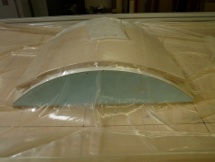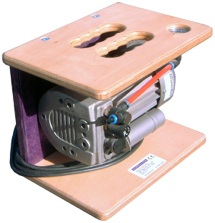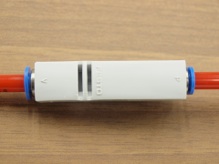

What is a Vacuum Press and how does it Work?
BASIC PROCESS
The simplest type of vacuum press uses a sealable bag and some form of vacuum generator. By placing materials in the bag, sealing it and then sucking out most of the air, a pressure differential is created between the reduced pressure inside the bag and atmosphere on the outside. It is this pressure differential that is used in vacuum pressing.
The second style of vacuum press uses a membrane fitted to a hinged frame attached to a rigid vacuum bed through which the air is removed. A FramePress can be a more convenient solution if you are regularly pressing large panels. Our standard FramePresses are freestanding with levelling feet on each leg. FramePress Pro systems are bolted to the floor and laser levelled to ensure that the bed is absolutely true and flat.
Most vacuum pumps and generators achieve around 85% vacuum. As atmospheric pressure is about 10 tonnes per square metre, this means that a pressure of 8.5 tonnes per square metre is being exerted on everything inside the bag. Please refer to http://en.wikipedia.org/wiki/Atmospheric_pressure for a fuller description of atmospheric pressure.
Whilst it is possible to generate much higher localised pressures than this using mechanical clamps it is pretty much impossible to achieve the uniformity of pressure available in a vacuum press in any other way.
WAYS TO CREATE A VACUUM
Bagpress manufactures vacuum presses that use three types of device to create the necessary vacuum.
Venturi - Vacuum level - 85%
If you already have an air compressor, and don’t intend to use your vacuum press heavily, then you may want to consider buying an air powered venturi based system. These systems offer a very low cost introduction to the vacuum press process with kits starting from as little as £195 ex VAT. Three different sizes are available with different flow rates and corresponding air consumption. Full details are given on our products page. Click here for more information http://en.wikipedia.org/wiki/Venturi_effect
Dry Running Electric Vacuum Pump - Vacuum level - 85% - 90%
The vast majority of professional vacuum presses use an electric vacuum pump. This is a more energy efficient way to generate a vacuum than a using a venturi and the flow rates ie how fast you can suck the air out of your bag, are many times higher. If you would like to see how a rotary vane pumps works click on this link http://en.wikipedia.org/wiki/Rotary_vane_pump
Oil Lubricated Electric Vacuum Pump - Vacuum Level - 99.98%
Whilst the very high level of vacuum may make this type of pump look very attractive there are several down sides, not least being the high cost of these pumps, usually at least 2-3x the price of the same capacity dry running pump. The oil in the pump needs to be changed regularly and if you are using water based adhesives you will need to have a drying unit between the press and the pump to prevent water being absorbed into the oil. This is a problem because at 99.98% vacuum water boils at 26°C so as soon as the oil reaches this temperature any moisture within it will start to boil causing the oil to overflow.
On the plus side, if you are involved in fairly specialised veneering work such as the raised panels in raised and fielded doors, then the additional pressure can be very helpful in forming the veneer over the corners where the veneer needs to stretch slightly to adopt the compound curve shape.



8m3 per Hour Dry Running Vacuum Pump
A Bag Being Evacuated
A FramePress

A Venturi